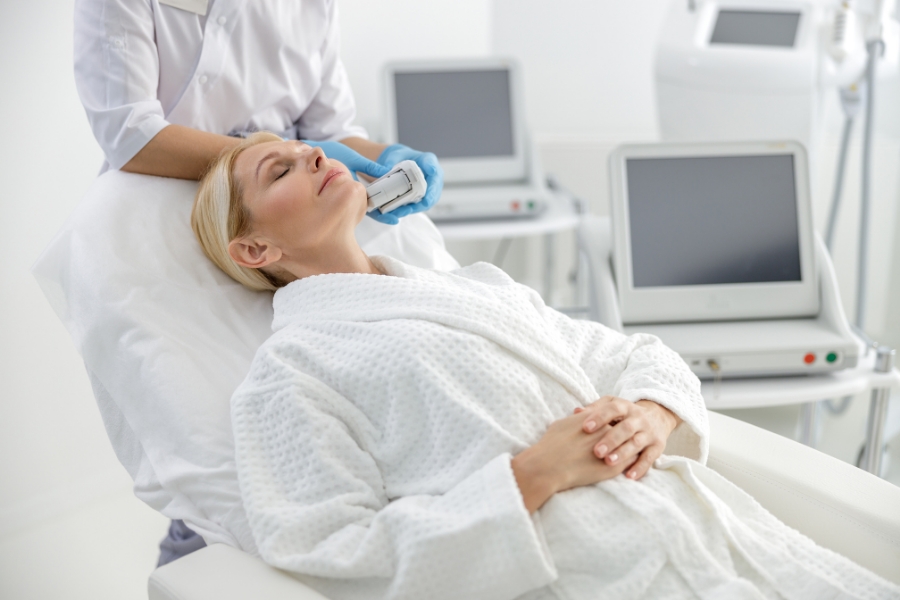Evolution of the Non-Surgical Facelift
Written by Marianna CasmirliIntroduced to North America in 1970, the first non-surgical facelift technology delivered galvanic current, by which visible stimulation of muscular contractions occurred, resulting in a firmer, lifted visage. The predominantly European technology was previously employed to accelerate the healing of bone fractures and breaks.1 This type of low-level electrotherapy was FDA-approved in the 1980s and applied successfully in relieving muscular paralysis and atrophy.
MICROCURRENT TECHNOLOGICAL ADVANCES
Today’s microcurrent technology enables multiple reactions to an invisible facial work-out. Because stimulation occurs at the cellular sub sensory level, it is invisible and free of sensation, yet promotes cellular activity, such as adenosine triphosphate (ATP) production, which stores and distributes energy, while promoting the production of collagen and elastin fibers in the dermis.
Furthermore, microcurrent technology has been shown to mobilize the lymphatic system and peripheral blood circulation, while breaking up scar tissue, all of which contribute to a detoxified, clearer complexion.
A 2003 study conducted by the pathology department at the University of Washington reported that skin treated with microcurrent exhibited a 45% increase in the number and length of elastin fibers in the dermis, a 10% increase in collagen density in connective tissue, and a 35% increase in lymphatic drainage and peripheral blood circulation.2 In conclusion, microcurrent stimulation had significant, multiple positive effects on the skin, leading to the effects of tightened, lifted, and clarified complexions.
FREQUENCY & MEASUREMENTS
Electrical impulses and signals resonate throughout the body at varying frequencies to regulate every function within human physiology and biology. The intricate musculoskeletal and neuromuscular systems’ fiber networks, facilitated by hydration pathways act as semiconductors, shuttling electrical signals from positive polarity to negative. Microcurrent therapies stimulate these pathways to support optimized functionality and performance of systems, muscle tone and tonus, organ efficiencies, and so on are affected.
Microcurrent pulses, typically up to 300 to 500 microamps in bipolar current, influence cellular-level activity to re-educate muscular behavior, thus firming the muscles.
A 1982 Belgian study concluded that skin regeneration, when microcurrent was applied at 500 microamps was five times higher than when measured at 1,000 to 5,000 microamps (one to five milliamp). Observations showed a distinct minimization of ATP production because of overstimulation.3
With respect to clients’ facial treatments, microcurrent application will facilitate iontophoretic deep absorption of aqueous serums by virtue of polarity. The synergistic effects will compound to deliver immediately elevated results, particularly with respect to antiaging protocols to restore youthfulness.
Microcurrent non-surgical facelifts are ideal, non-invasive treatments to improve and maintain the contours of the face and neck at any age, beginning at 30. The earlier the better. Beginning with 10 sessions at a frequency of twice per week will assure clients’ youthful glows, well into their years of healthy aging.
References
- Bassett et al., 1964 Bassett CAL, Pawluk RJ, Becker RO Effects of electrical currents on bone formation in vivo Nature (London), 204 (1964), pp. 652-654
- Dr. Emil Y. Chi, Ph.D., 2003 Cellular Activity Effects of Microcurrent University of Washington
- Ngok Cheng etal, 1982 The Effect of Electric Currents on ATP Generation, Protein Synthesis and Membrane Transport University of Louvain, Belgium
